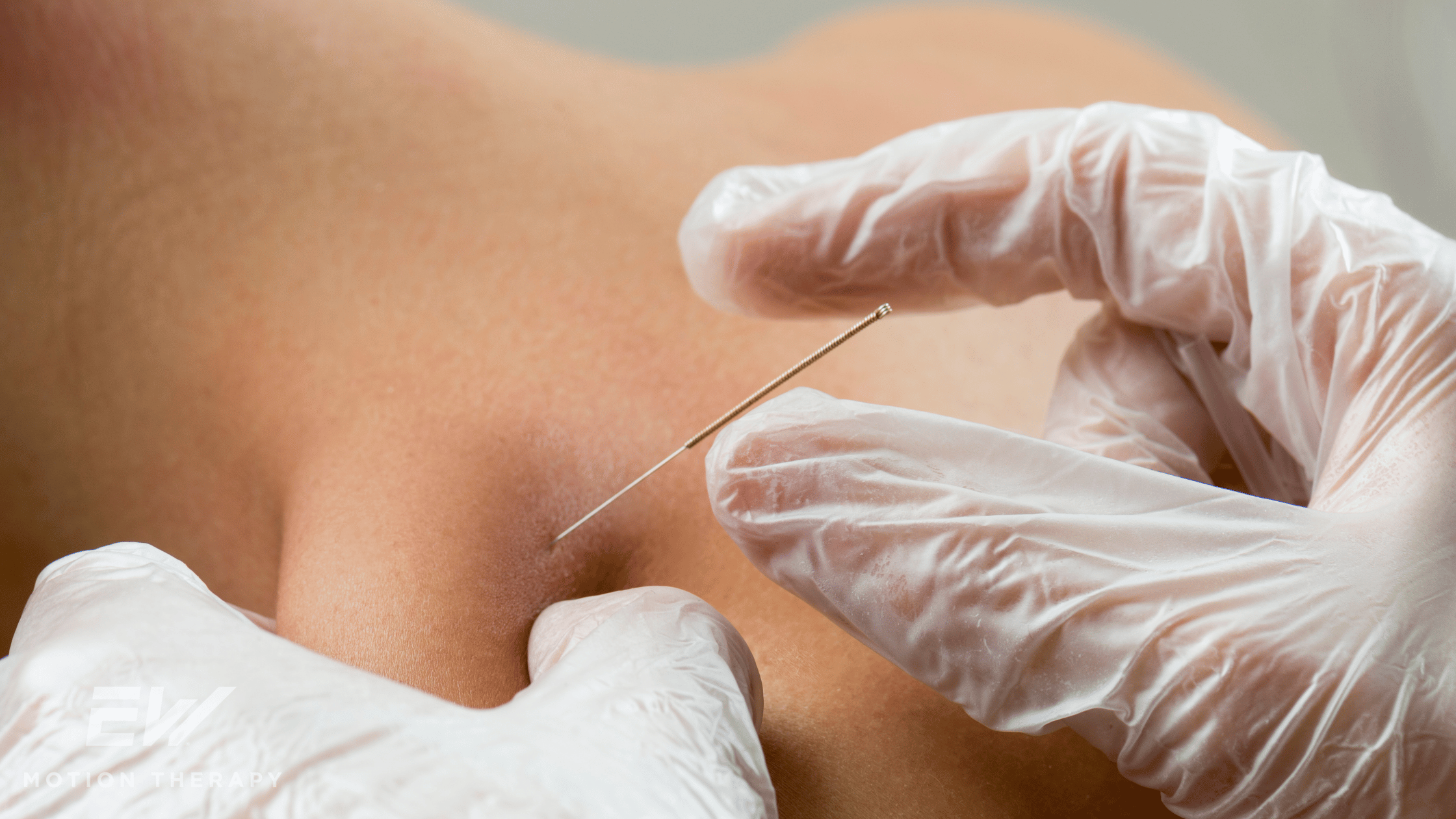How Long Does It Take for Dry Needling to Work?

Licensed Physical Therapist, PT, MSPT // Certified Dry Needling Specialist / Clinical Director of EW Motion Therapy Hoover
Dry needling is an increasingly popular treatment among those seeking relief from muscle pain and tightness. Often used by physical therapists, this technique involves inserting a thin, solid needle into specific “trigger points” on the body to stimulate a muscle, alleviate pain, and improve mobility. If you're considering dry needling, you likely have questions about its effectiveness, specifically how quickly you can expect to see results. At EW Motion Therapy, your physical therapist will assess your symptoms and suggest a plan of treatment that may include dry needling. If and when dry needling is used, your therapist will explain the procedure, the benefits, and the expected outcomes so you are fully aware of how it will help you. To answer some of your questions, this article explores what you can expect immediately after dry needling, how to gauge its effectiveness, the duration of its effects, factors that influence these outcomes, and the typical number of sessions required to achieve lasting relief. With this information, you can decide if dry needling is the right treatment for you, whether you come to EW Motion Therapy for the procedure or not.
Immediate effects of dry needling
Immediately following a dry needling session, it's common to experience a range of sensations. You might feel relief from pain almost instantly, as the needling can help relieve acute tension and lower inflammation. However, it's also normal to experience some discomfort during the muscle's possible “twitch” response and right after the procedure. This can include muscle soreness like after a workout, or a mild aching feeling, which typically subsides within 24 to 48 hours. This soreness results from the muscles reacting to the needle insertion, which is intended to initiate the healing process. The initial irritation is a part of the body’s natural response, leading to greater muscle relaxation and pain relief as the muscles recover.
It's essential to communicate openly with your physical therapist about any sensations you experience during or after the session. This feedback allows them to tailor future treatments to your specific needs and ensure a comfortable and effective experience.
Understanding the effectiveness of dry needling
Signs that dry needling is working
As you continue with treatments, several signs indicate dry needling is effective. The most obvious is a reduction in pain and increased range of motion in the affected areas. You may also notice improved muscle strength and coordination, less muscle tightness, and a general enhancement in function. Typically, these improvements can often be felt after one session, but depending on the individual and the condition being treated, you might need more sessions.
How long do the effects last?
The duration of relief from dry needling can vary widely among individuals. Some may experience immediate and lasting relief after only one session, while others might need multiple sessions to maintain the benefits. Typically, the relief can last from a few days to several weeks. Repeated sessions might be necessary to manage chronic conditions, but these should be spaced according to your therapist’s recommendations based on your response to the treatment.
Factors influencing the timeline of results
The timeline for seeing results from dry needling can depend greatly on your overall health and the severity of the condition being treated. If you wake up with a “crick” in your neck, dry needling can likely resolve your symptoms within 24 hours. However, chronic conditions, such as long-standing muscular pain or fibromyalgia, may require more time and multiple sessions to manage effectively. Additionally, your overall lifestyle, stress levels, diet, and the amount of physical activity can influence how quickly you respond to the treatment.
How many sessions do I need for optimal results?
While some patients may feel significant improvement after just one session, some treatment plans involve multiple sessions. A plan might include a series of 4-6 sessions spaced over a few weeks. This allows your body to adapt to and recover from each session, maximizing the therapeutic benefits. Your physical therapist will tailor the treatment plan based on how your body responds to initial sessions. This personalized approach helps ensure that you receive the optimal number of treatments to achieve sustained relief without over-treatment.
Dry needling can offer significant relief for many individuals struggling with muscle pain and tightness. While the immediate effects can include both discomfort and relief, the long-term benefits of reduced pain and improved mobility are often worth the initial discomfort. Understanding the factors that affect how quickly and effectively dry needling works can help set realistic expectations and improve your treatment experience. As always, consult with a physical therapist certified in dry needling to discuss whether dry needling could be an appropriate treatment option for your specific condition. Many of our physical therapists at EW Motion Therapy are certified dry needling practitioners, and they will present the procedure as a treatment option only when it is the best course of action for your condition. To learn more about dry needling, click below to download our answers to 20 frequently asked questions.


